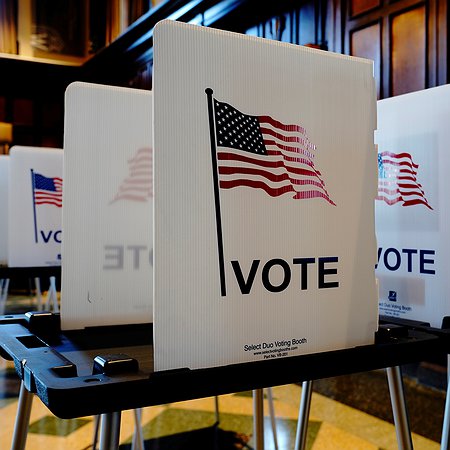Republican Lawmakers Attempt to Dispute Data Showing Clear Success of Bail Reform
Despite years of data pointing to the contrary, Republicans continued to falsely dispute bail reform’s efficacy. Lawmakers attempted to suggest that DCJS data could be undercounting the number of people who are not returning to court following bail reform.
The Briefing

A joint session of the state Assembly and Senate this week highlighted the ongoing success of bail reform. New York State Division of Criminal Justice Services leadership presented data showing that rearrest rates in New York City remained constant before and after bail reform. Court appearance rates improved after bail reform, meaning less people failed to appear after their release from custody.
Despite years of data pointing to the contrary, Republicans continued to falsely dispute bail reform’s efficacy. Republican lawmakers pointed out that desk appearance tickets (DATs) – arrests followed by release from a precinct and the issuing of an appearance ticket for a future court date in lieu of being held pending an appearance for a judge within 48 hours – were not included in DCJS data on failure-to-appear rates, suggesting that DCJS data could be undercounting the number of people who are not returning to court following bail reform.
But a deeper dive into the data and the law demonstrates that bail reform has nothing to do with any gaps in DCJS data, and that there is no reason to believe failure-to-appear rates have increased.
What is a desk appearance ticket?
A desk appearance ticket is a summons that mandates someone to return to court at a later date following their arrest. A common type of arrest in New York is as follows: someone is arrested, placed in handcuffs, taken to the police station, fingerprinted and held in custody until an arraignment. A DAT is a less restrictive form of arrest, used for lower-level crimes. In this scenario, someone is arrested, placed in handcuffs, taken to the police station, fingerprinted, and released with a desk appearance ticket that states a future court appearance date.
The data gap has nothing to do with bail reform
An analysis of the DCJS dataset and state law shows that while a data gap in counting DATs exists, it has nothing to do with bail reform and doesn’t indicate that more people are not returning to court.
The DCJS dataset highlighted in Monday’s hearing includes people who have been fingerprinted after arrest. New York state law requires that anyone who is given a desk appearance ticket is fingerprinted before they are released from police custody. Police in New York City and a couple major upstate counties, a sizable portion of the state’s population, regularly fingerprint people before releasing them with a desk ticket. But in most upstate counties, people are not fingerprinted before their release, despite a statutory requirement to do so. The fact that the DCJS data does not capture these particular cases is not the fault of DCJS, rather, it is a resource and implementation problem for local law enforcement upstate.
Contrary to Republican claims, no one can say what the missing data shows. The data problem that exists in DCJS’ 2020 and 2021 data also exists in DCJS’ pre-bail reform 2019 data – the upstate DAT cases were missing from that data as well. In other words, if the failure-to-appear rate in 2021 is undercounted – in the estimation of Republicans – the failure-to-appear rate in 2019, before bail reform, is likely undercounted as well. Again, this issue has nothing to do with bail reform.
Bail reform did not increase DAT failure-to-appear rates
There is also no reason to believe that bail reform increased DAT failure-to-appear rates in any part of the state. One of the common-sense changes to the law made by the legislature during bail reform was allowing police to refuse to give a DAT to a person who has shown that they may not come back to court. Police also not have to give a DAT if 1) a person has outstanding warrants; 2) the person refuses to give their identity or method of contact; 3) the person is charged with an alleged sex offense, domestic violence, a hate crime, possession of a weapon on school grounds; and 4) the officer believes an order of protection should be issued.
The Republicans are fabricating a hypothetical group of people who are given a DAT upstate and do not show up to court because of bail reform; the facts, data, and law show that such a group simply does not exist.
We must invest in communities, not revisit a successful public policy
Testimony from key stakeholders highlighted additional data that clearly indicates bail reform is working. These stakeholders encouraged lawmakers to invest in solutions that address root causes of crime instead of using time and political capital on revisiting a successful policy.
Jullian Harris-Calvin, the director of the Vera Institute’s Greater Justice New York Program, cited polling data where 53 percent of respondents favored a crime prevention approach that includes investments in schools, jobs, housing and health care instead of an approach that is “tough on crime.” Harris-Calvin advocated for increased funding for pretrial services in the community instead of through law enforcement, including the creation of a statewide Office of Pretrial Services, and community-based investments like affordable housing, re-entry services, mental health and substance use care and community violence intervention programs.
Testimony from the New York State Association of Criminal Defense Lawyers focused on alleviating the mental health crisis among some of the most vulnerable New Yorkers. Association president Yung-Mi Lee highlighted the fact that over half of the people in New York City’s jails receive treatment for mental illness.
“Rather than change our state’s bail laws, New York needs to ensure that hospitals and treatment centers are adequately staffed,” Lee wrote. “New York has an opportunity to focus on what resources are needed to ensure access to treatment for those being swept into our criminal legal system. This is the next phase of overdue criminal reform needed. Instead, we are playing defense and fighting off regressive reforms.”
Susan Bryant, the executive director of the New York State Defenders Association, pushed back on the notion that judges do not have enough discretion to make decisions about a person’s release from custody. Noting that racial disparities in New York’s jails have gotten worse since bail reform’s enactments, Bryant testified that proposals like Governor Hochul’s plan to eliminate the “least restrictive means” standard in bail-eligible cases, are unnecessary. If judges do not understand the law, Bryant wrote, they should receive more training, not further ambiguity.








